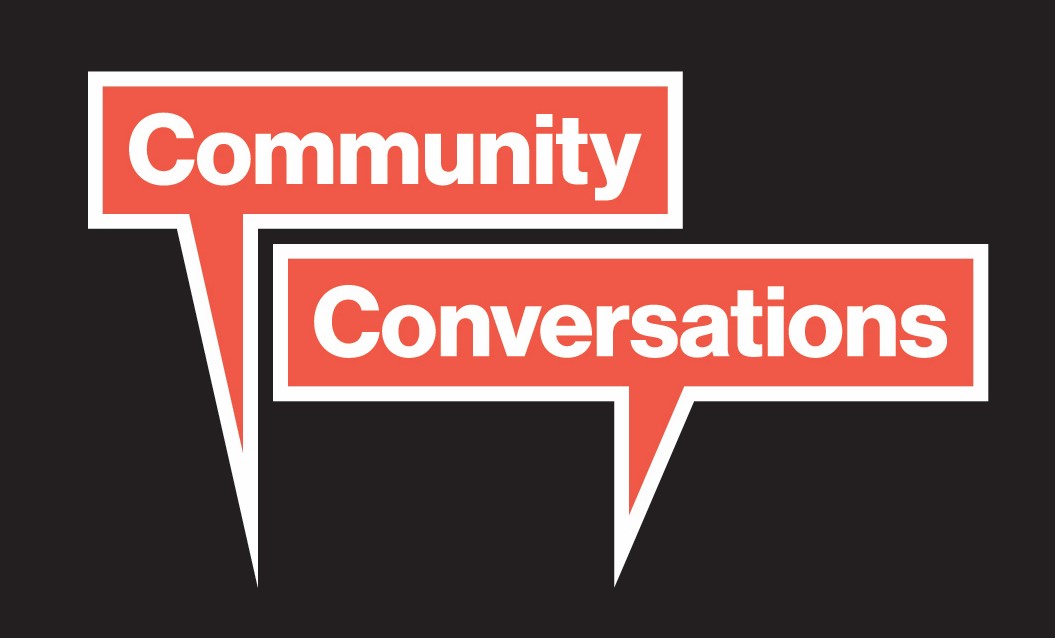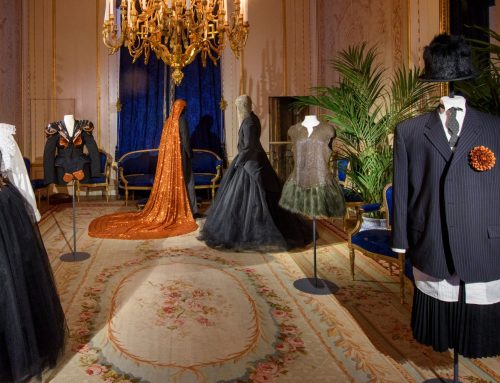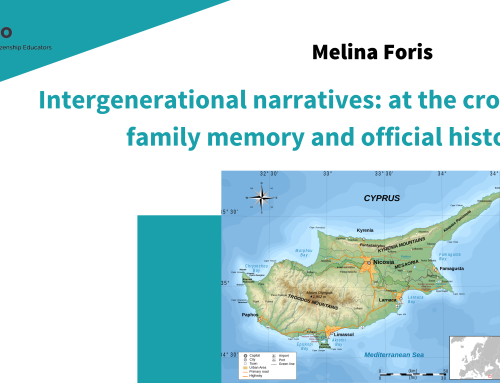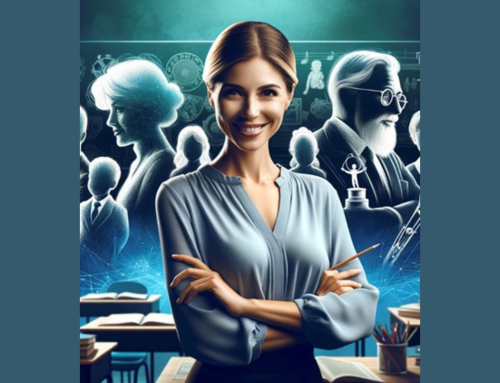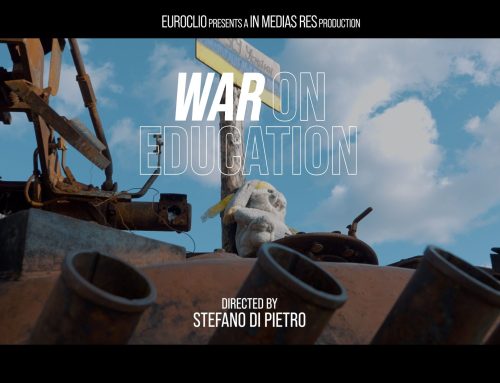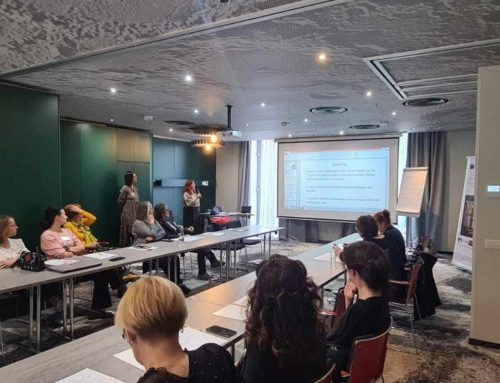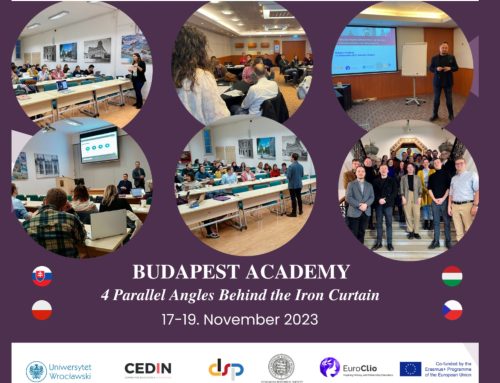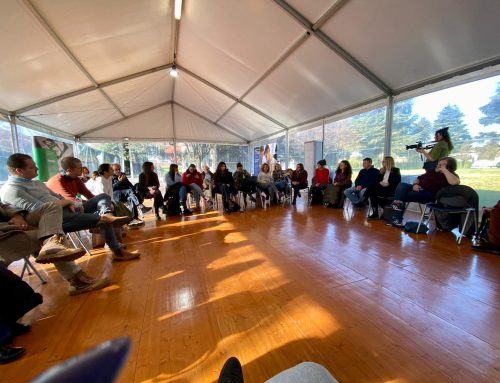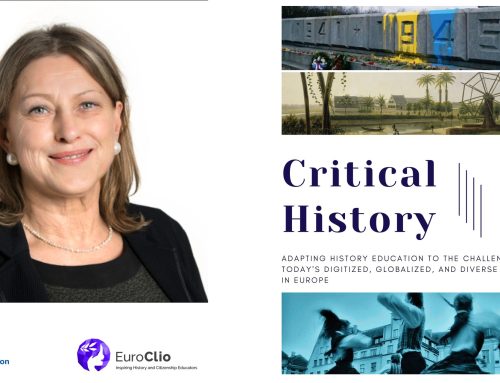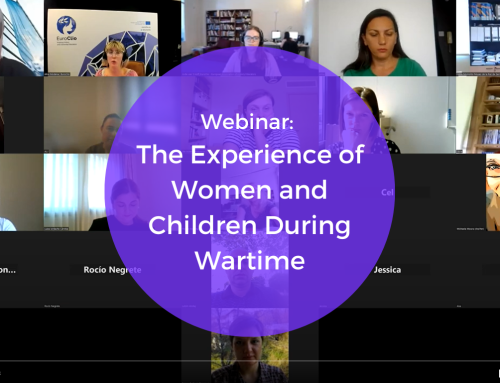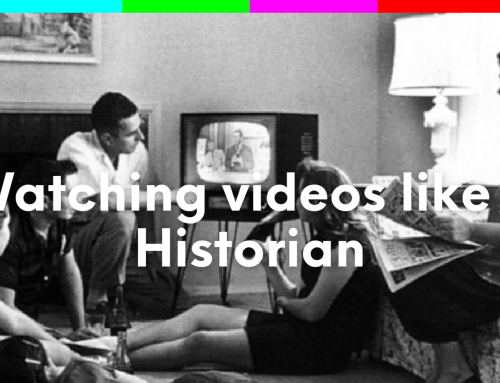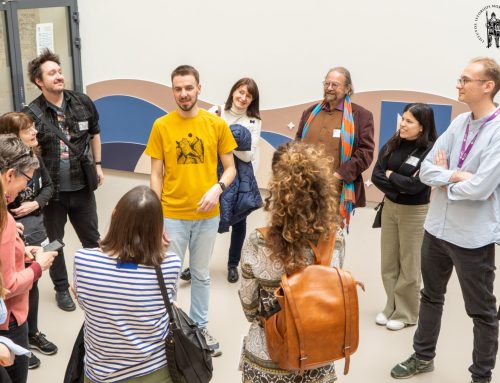On February 26th, EuroClio’s Eugenie Khatschatrian and VPRO’S Odette Toeset sat down with Robin de Bruin of the Amsterdam School for Regional, Transnational and European Studies (ARTES). The discussion, hosted by the European Cultural Foundation, shed light on the precious outcomes of In Europe Schools, its relevance in building European cooperation and citizenship and, perhaps, in contributing to a new, inclusive and diversified narrative(s) for Europe.
[su_box title=” ” style=”bubbles” box_color=”#ffffff” title_color=”#000000″ radius=”5″] In Europe Schools is a unique online project that encourages a transnational approach of teaching Modern European History and focuses on the development of research skills and media literacy through documentary-making. More than 110 schools from 30 different countries have joined us so far! [/su_box]
Why "In Europe Schools"?
The Community Conversation event started off with a brief explanation about how the project came to life. In 2007, Dutch broadcasting company VPRO released the ‘’In Europe’’ television series in the Netherlands on the modern history of Europe, from WWII until the fall of the Berlin Wall. Perhaps unexpectedly, the series turned out to be a source of inspiration for some Dutch history teachers. In fact, they asked whether it was possible to develop educational resources based on the series. In a way, the project represents the natural “evolution” of the series, but most importantly, it started because of a concrete demand – real needs of teachers who were struggling with teaching sensitive and controversial issues in the classroom. In 2018, a second series of the documentary was released, this time dealing with very recent history – from 1989 onwards: the series was subtitled “History Caught in the Act”.
Catching history in the act is indeed what In Europe Schools is all about. VPRO joined forces with EuroClio with the main goal to connect youngsters working together, focusing on history whilst they are in the midst of it, and ultimately have united European youngsters. In a few words, the project requires that two European schools partner up: secondary school students do research and film their recent history; they exchange the documentary and discuss the outcome. In Europe Schools therefore enables multiperspectivity by matching schools from different parts of Europe and approaches European history from a transnational perspective. It facilitates a European network of teachers and students, and by doing so, it also more broadly encourages European cooperation.
An overview of EU’s Grand Narrative(s) and its Crises
During the discussion, Robin de Bruin asserted multiple times that the genius of this project is that it is a grassroots project, especially in a time of unprecedented crisis due to the pandemic and in which the European Union might not appear as strong as it used to.
The EU created its Grand Narrative after 1945: after WWII, the grand narrative of European integration as a peace project for the member states was building peace by creating welfare – a narrative which De Bruin, hereby following his colleague Wolfram Kaiser, refers to as “peace through a common market’’ narrative (Kaiser 368).
That the horrors of Auschwitz have become the key experience for European history-writing is a common opinion, and for some historians it represents the creation of a foundational past since 1945. This led to two outcomes: on the one hand, the memory of WWII was perceived as the memory par excellence; on the other hand, it led to neglecting the histories of other parts of Europe, the experiences of colonialism and imperialism. Colonialism and postcolonial resentment were indeed excluded from European history, and only recently they have received renewed attention.
European integration history has now the aim of trying to heal the division of Eastern and Western histories by constructing a common past that also contemplates the experience of communism – and consequently the aim of dismantling Eurocentrism, seen as conscious or unconscious tendency to judge histories from all over the world by taking Western history as the norm and role model to follow. In the twenty-first century, Eurocentrism remains powerful both at seen and unseen levels and affects contemporary politics and international affairs.
Michael Wintle argues that the Holocaust started a process in which Europe has gradually become willing to confront its problematic past: European countries have started to face their past crimes and more openly address slavery, imperialism, colonialism, and also the post-Yugoslav conflicts of the 1990s. In Europe Schools includes an Education Kit on Difficult History that deals with such topics and one of the main challenges both teachers and students face is how to critically address these sensitive issues and confront strong opinions.
Nowadays, the narrative of building peace through a common market narrative does not seem to appeal anymore, especially to younger generations. To counter Euroscepticism, the EU has started several initiatives to develop a new narrative for the European integration project. Dr De Bruin mentioned the “House of European History” in Brussels, which was created to include the communist experience of the Eastern European states into the grand narrative of European integration. Nevertheless, according to Dr De Bruin, it left out all other kinds of experiences, such as the colonial experience of former colonial subjects now living in Europe:
[su_quote cite=”Robin de Bruin“] When you include specific parts of the population, you also exclude other parts of the population. This is always the problem with the grand narratives of European integration. It’s really very important that a new narrative for Europe is a collection of those small little narratives, such as the personal narratives of the In Europe Schools project. [/su_quote]
The force of In Europe Schools lies in the fact that it deals with a variety of small histories, and it’s precisely by starting from personal histories that perspectives and experiences can add up and become something powerful.
When a grand narrative is replaced by another grand narrative, it is always fed by smaller narratives that at a certain moment become an avalanche.
Dealing with counter narratives: the implications of media literacy
The In Europe Schools toolkits are about controversial topics – difficult history, migration, climate change and gender equality – and sometimes it is difficult to introduce such topics to the classrooms, either because they are too abstract and students might not feel concerned, or because they are afraid to take a stand and they do not feel comfortable about expressing their own opinion. Pupils are encouraged to take their difficult histories into the classroom, which can be seen as a microcosmos of Europe. As students come from different parts of Europe (or even different parts of the world) within the same classroom, they might have different views of the European Union and perceive topics differently such as migration or climate change. The main challenge for teachers is to promote a discussion in a context not of hatred and intolerance, but open-mindedness and inclusion. Despite monitoring strong statements and potential fake news, the project does not give a clear political direction and it does not exclude any story. The project therefore covers a wide spectrum of personal narratives and collects authentic stories, yet stories that people have the power to tell in the way they want to – thanks to storytelling and media literacy.
[su_quote cite=”Odette Toeset”] We don’t give political directions because it’s interesting to have different opinions. People who are against migration are allowed to make their own story on migration. But of course, there is a limit. We chose not to have the comments open because with comments open it could explode and it’s really difficult to oversee it. [/su_quote]
So far, there haven’t been clashes in the classrooms while working on the project. The main source of discomfort has rather been the question of how to protect people (for example family members) who would like to share their story but fear dangerous consequences. People are hesitant to show themselves on camera and do not want the video to be published on the Internet. Odette mentioned that as a documentary-maker, you don’t want to lose the story and at the same time you want to protect these people and ensure their safety. So how do you tell a story in a documentary without putting people, potentially, in danger? Timelapse and drawing can help anonymise a story, the video-maker can make sure that people are not recognizable in the video or just decide to leave out the actual people to tell a more generic story.
When students are done with the documentaries, they upload the video on YouTube. The use of media literacy, which may be the main strength of the project, can also represent a risk: the YouTube channel has to be monitored, as it is a potential open space on which all kinds of content can be uploaded. In order to avoid conflicts, VPRO chose not to have the comment section open.
Building European citizens?
It is clear that the project might have interesting implications in creating a European identity – a sense of belonging and personal identification with Europe. When asked whether they have the feeling of helping building European citizens, Odette replied:
[su_quote cite=”Odette Toeset”] These youngsters are the next European citizens that have to vote, be part of Europe and work together, and working together will be much more important in the future. We see now with Covid that there is a clash between national interests and European interests, but you can’t do without each other. We want to give people the open space to face cooperation themselves and not forcing it onto them. [/su_quote]
In Europe Schools requires students and teachers to fill out a survey – both in the beginning and in the end – in which there are questions about being European and how their awareness on certain topics has changed, but also about the use of media literacy and their perception of collaboration.
In 2015, Wilfried Loth was writing that “European identity will therefore not simply replace national identity in the foreseeable future. Instead, what seems to be emerging is that people in Europe are living with a multilayered identity, an identity in which regional, national, and European aspects are united.” (Loth 437). Whilst the cultural form of the EU aimed to create a European identity that rests on the premise that Europe has a single, shared culture, In Europe Schools acknowledges that this is not always the case.
“European culture is plural, in flux and contested; it does not rest on a shared history (…) National cultures or even a European culture may exist in perception, but that does not make us all the same. Europe and European culture are discourses, with many voices, including some from outside the conventional borders, and those of newcomers from ex-colonies and elsewhere.” (Wintle 248-249).
Students are working on their own personal narratives, but are also very excited about cooperating with other European students and, in this sense, might feel part of a European narrative. Pupils are in general super excited about filming: they are using this project instead of going out on a school trip, and thus to discover different European cultures and viewpoints. The sense of collaboration is really important: for example, two schools decided to join their forces, partner up students with the partner school and make the documentary together.
[su_quote cite=”Eugenie Khatschatrian“] On the long term, the project aims at maintaining the European connection: ideally schools would continue working together to keep a European network of both students and teachers.[/su_quote]
Bibliography – and suggested readings!
Appelqvist, Örjan. “Rediscovering uncertainty: early attempts at a panEuropean post-war recovery”. Cold War History. Vol. 8, No. 3. Routledge (pp. 327–352), 2008.
Brolsma, M., de Bruin, R., Lok, M. Eurocentrism in European History and Memory. Amsterdam: Amsterdam University Press, 2019.
FitzGibbon, J., Leruth, B., Startin, N. Euroscepticism as a Transnational and Pan-European Phenomenon : The Emergence of a New Sphere of Opposition. Routledge, 2016.
Kaiser, W. “Clash of Cultures: Two Milieus in the European Union’s. ‘A New Narrative for Europe’ Project”. Journal of Contemporary European Studies, Vol. 23, No. 3 (pp. 364-377), 2015.
Loth, W. Building Europe. Berlin, München, Boston: De Gruyter Oldenbourg, 2015.
Sorrels, K. Cosmopolitan Outsiders: Imperial Inclusion, National Exclusion, and the Pan-European Idea, 1900-1930. Palgrave Macmillan, 2016.
Van Meurs, W. et al. The Unfinished History of European Integration. Amsterdam: Amsterdam University Press, 2018.
Wintle, M. Eurocentrism: History, Identity, White Man’s Burden. Routledge, 2020.
Join the project
Check out In Europe Schools’ website and YouTube Channel
Contact us via eugenie@euroclio.eu or register via this form
Toolkits:
Learn More
If you are interested in how to decolonise history, please read our blog post and join our webinar series from 16 April to 21 May 2021
You can subscribe to future Community Conversations at http://eepurl.com/haj679

